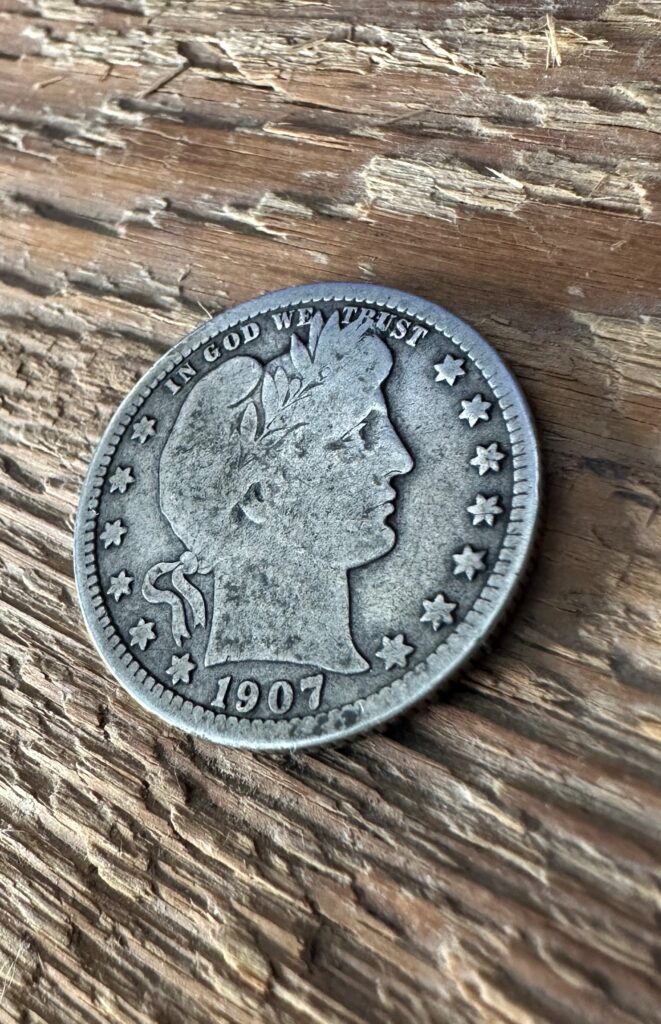What are the most valuable rare quarters of all time? We have the answer for you. What makes a quarter rare, and why is it so valuable? We answer that question as well. Let’s dig right in, and learn about quarters worth serious money.
The average George Washington quarter mixed with the rest of your pocket change might only be worth $0.25. However, some rare quarters are worth a little more money — while others are worth quite a bit!
Before the rise of the internet, you would have to become an expert in numismatics (the study of rare coins) to cash in on a rare quarter’s worth. The good news is that it’s no longer the case.
If you’re new to coin collecting or have been in the game for years, this guide will help you better understand what makes a quarter valuable.
Most Valuable Rare Quarters Worth Money
Nowadays, nearly one billion quarters are minted every year. But in the early days of the United States, the quarter was one of the last coins to join the Country’s coinage.
The first-year quarters were minted in 1796, and only 6,146 were struck. After a few years, the quarter began earning acceptance among the public. Now, valuable rare quarters sell for hundreds of thousands of dollars.
Before we look at the ten most valuable rare quarters, let’s look at each design and how quarters changed coinage history.
Early Bust Quarters (1796-1838)
Early Bust quarters were manufactured from 1796-1838. These quarters have no mint marks and are minted using rudimentary processes.
They include the Draped Bust designed by Robert Scot and the Capped Bust designed by John Reich.
Both coins contained 11% copper and 89% silver, weighed 6.74 grams with a diameter of 27.5 millimeters, and reeded edges.
These coins are by far the rarest of the various collectible quarters and are incredibly valuable, as you will see below in the top 10 list.
Seated Liberty (1838-1891)
The Seated Liberty Quarter was a long-running series. Several variations and rare dates drive up the value of select coins in this mintage.
The original Seated Liberty series ran from 1838 to 1866, with the Obverse designed by Thomas Sully and the reverse by Christian Gobrecht. The first series was also known as “No Motto” because it didn’t include “In God We Trust,” which wasn’t added until 1866.
The second series of Seated Liberty coins were struck in 1853 with a design change showing “Arrows & Rays.”
Just a year later, another design change erased the Rays and left only arrows for the 1854 to 1855 years.
Next, in 1856, the arrows were removed, and then in 1866, the motto “In God We Trust” was added.
Several other design changes to the Seated Liberty quarter make this coin intriguing from a historical and numismatic perspective. The Seated Liberty Quarter is a coin collector’s dream come true.
Barber (1892-1916)
Designed by Charles Barber, the Barber Quarters were struck with 10% copper and 90% silver, weighing 6.25 grams, a diameter of 24.3 millimeters, and a reeded edge.
Rare dates for the Barber include the 1896-S, with only 188,039 coins minted, 1901-S with just 72,664 coins, and 1913-S where only 40,000 quarters were struck.
Barber Quarters in MS63 Select Uncirculated condition might show some luster impairment with only a few light blemishes and contact marks in focal areas.
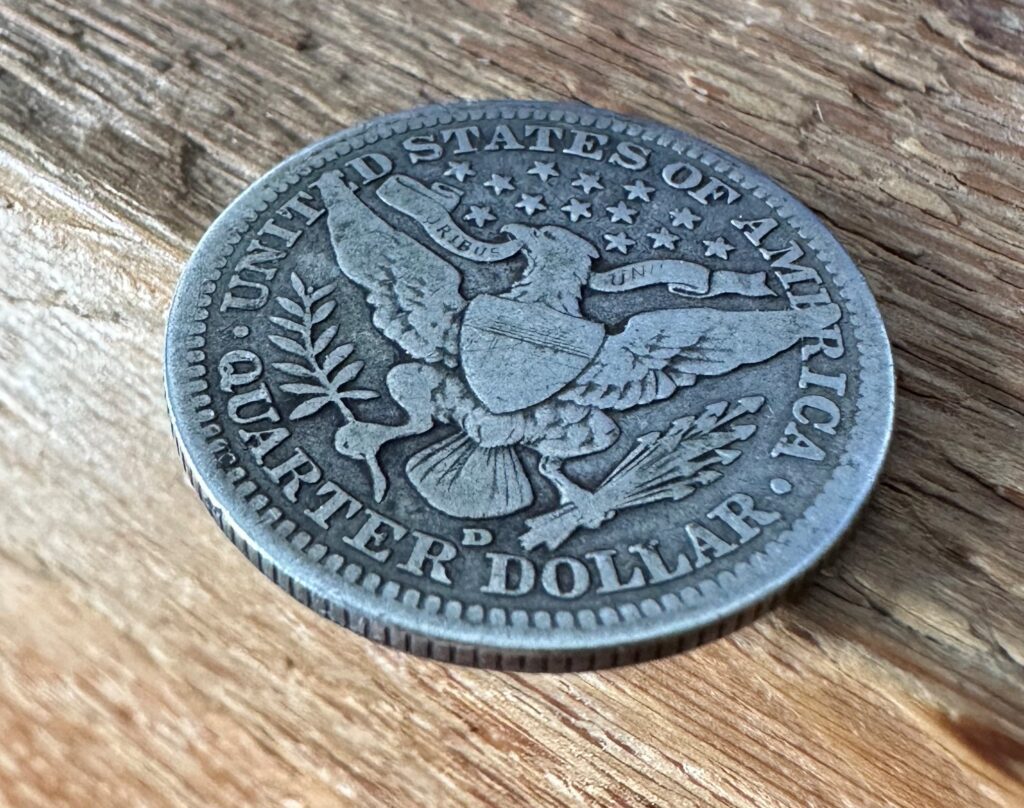
Standing Liberty (1916-1930)
Nearly 25 years of the Barber, the American public was ready for a new look in coinage. Hermon Atkins MacNeil won the competition against several other artisans for the new quarter design.
MacNeil’s coin featured a Greek sculpture-style Standing Liberty, holding a shield in one hand and an olive branch in the other.
The coin remained 10% copper and 90% silver, just like the Barber. The weight of 6.3 grams and diameter of 24.3 millimeters also matched the Barber.
The key date for the Standing Liberty is 1916 when only 52,000 coins were struck. But as with other first-year coins, values don’t reflect the rarity because collectors tended to keep newly issued rolls of the Liberty.
Washington Quarters (1932-1998)
The exact dimensions and composition remained for the initial Washington Quarter, but the new designer, John Flanagan, was tasked with searching for a design that might lift the spirits of a country in the depths of the Great Depression.
Later, from 1964 to 1974, the composition changed from silver to a copper-nickel-clad coin.
More than 21 billion Washington Quarter business strikes have been coined since 1932.
Most Valuable Rare Quarters of All Time
So let’s finally get to the list. Here are the top 10 highest-priced quarters to ever sell at auction and their final sale price.
Draped Bust and Capped Bust coins steal the spotlight as most of the top 10. Pristine coins in perfect condition nearly 200 years old will command huge premiums at auction sales.
#1 – 1796 Draped Bust – $1,740,000
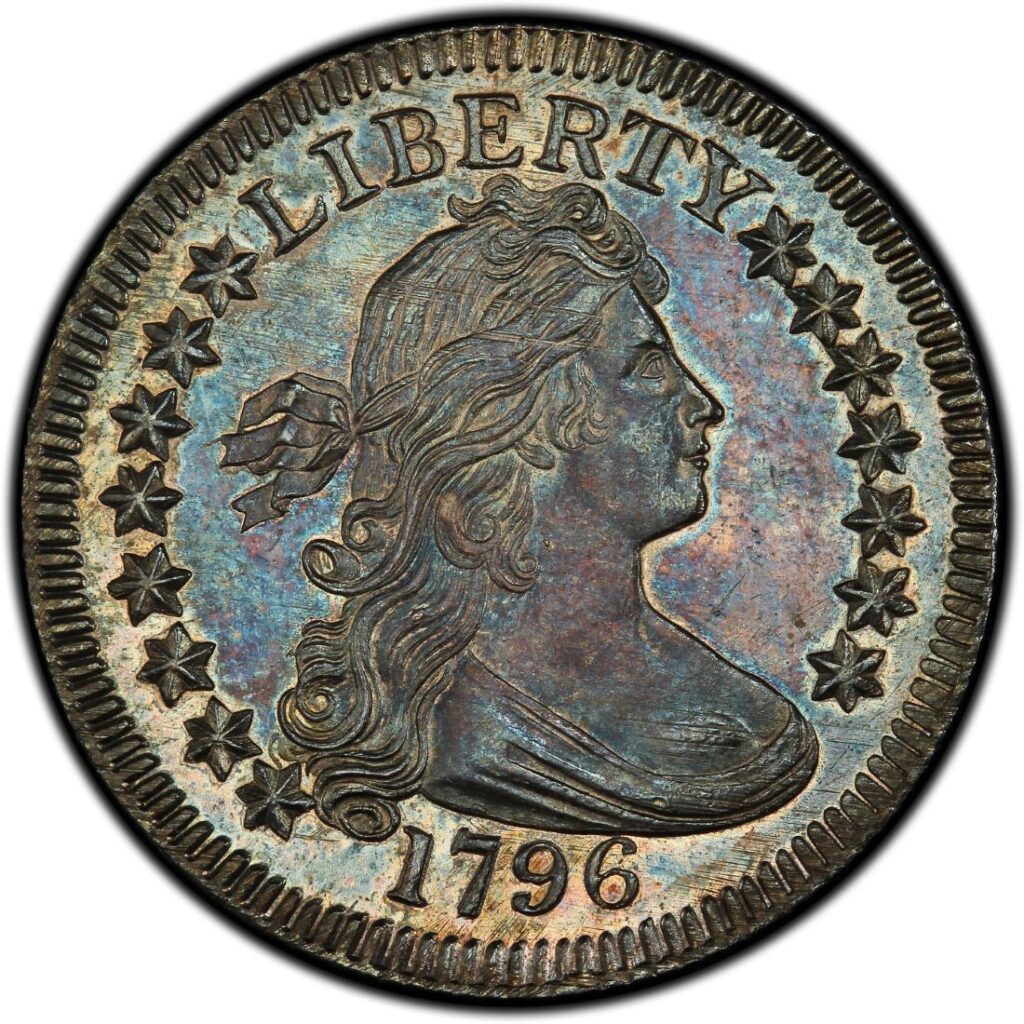
#2 – 1827 Capped Bust Quarter – $705,000

#3 – 1807 Draped Bust – $630,000
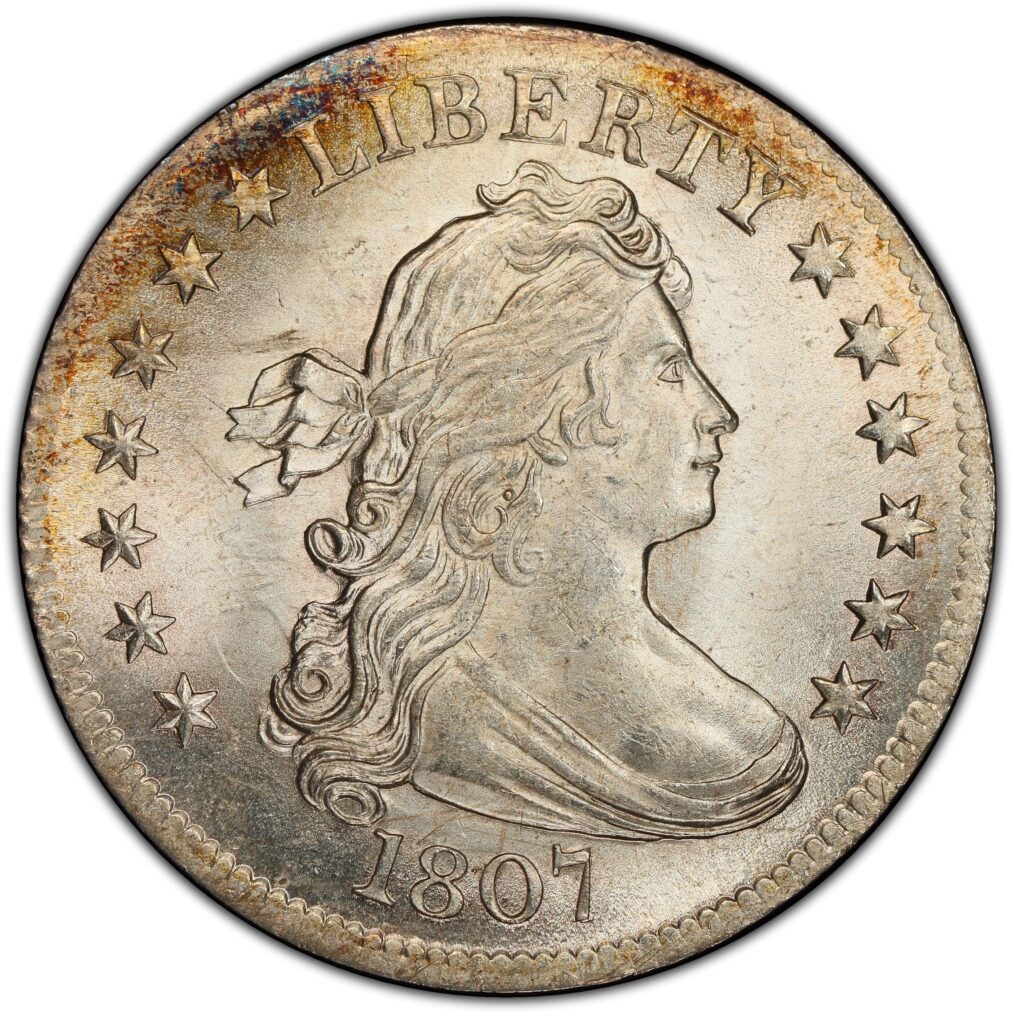
#4 – 1805 Quarter – $402,500
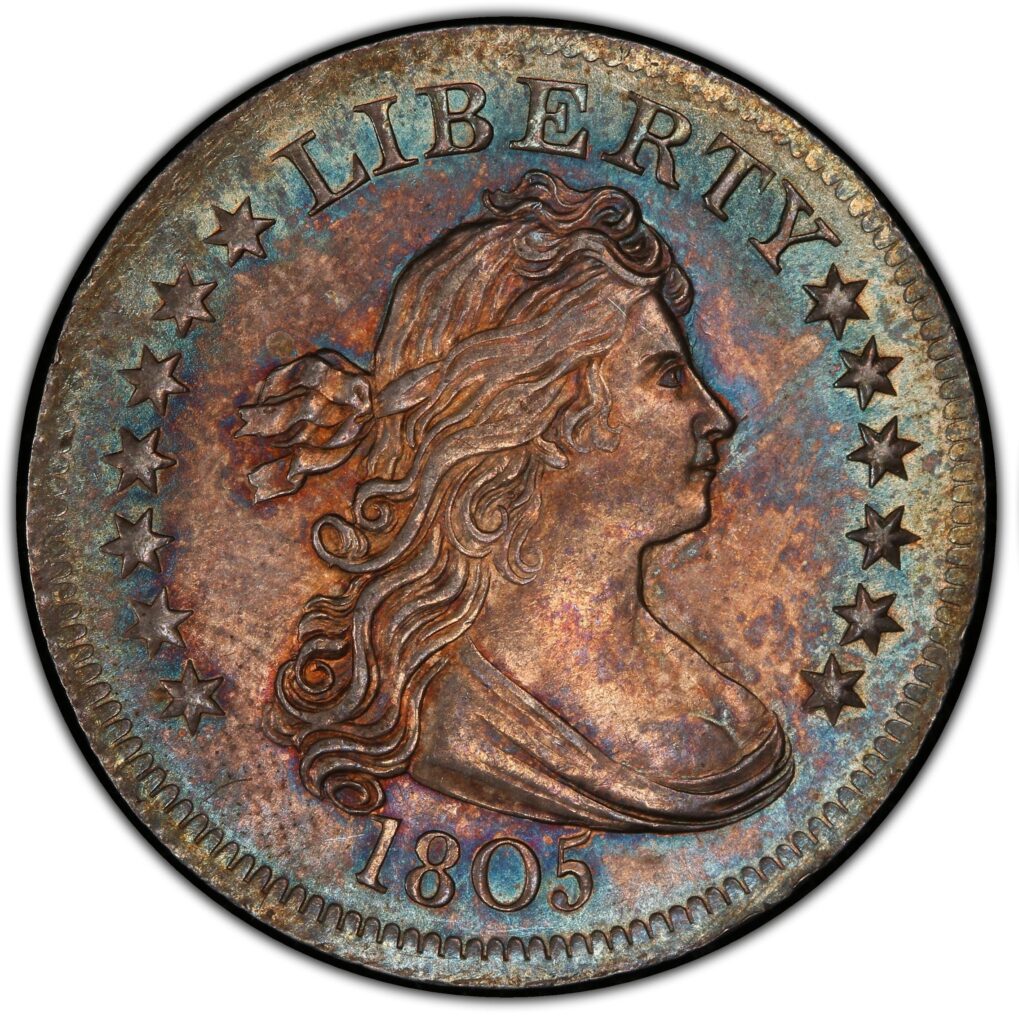
#5 – 1920-D Standing Liberty Quarter – $372,000

#6 – 1828 Capped Bust – $352,500
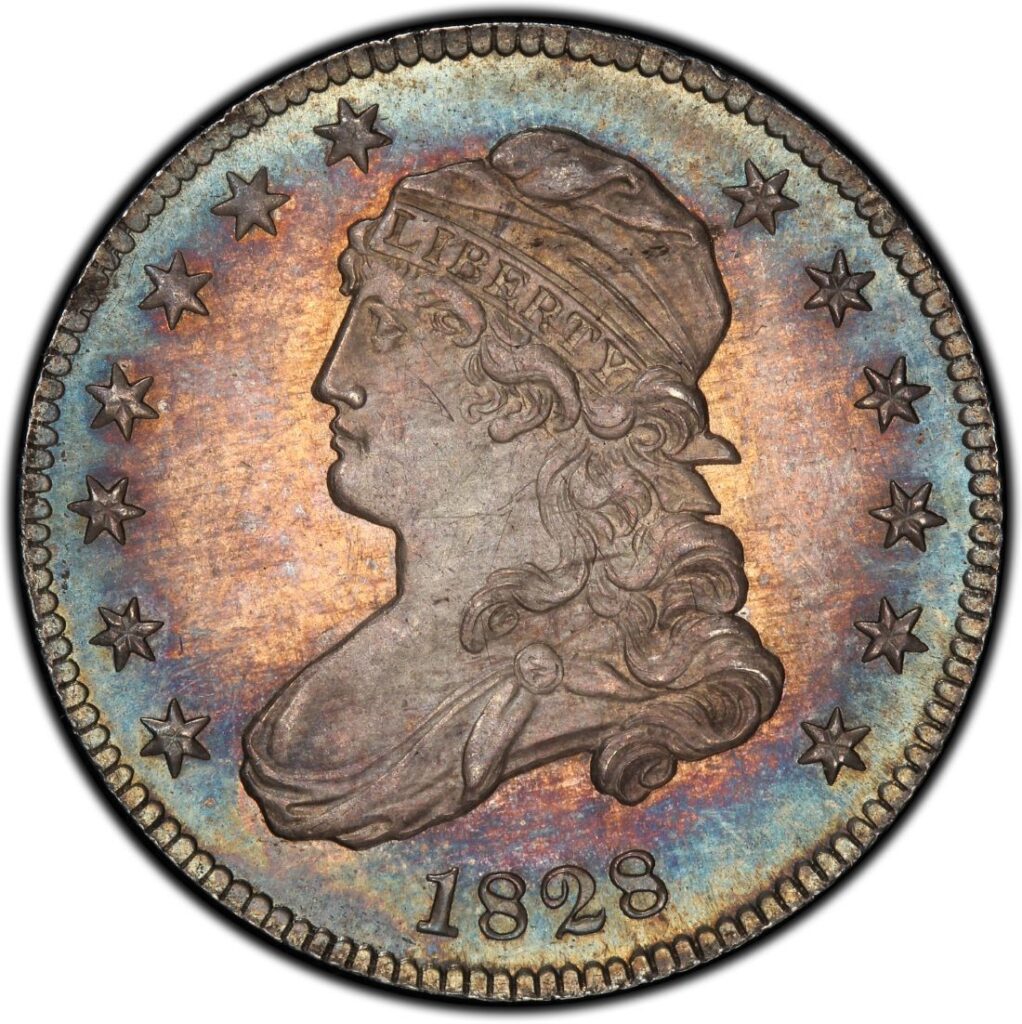
#7 – 1804 Quarter – $345,000

#8 – 1840 Seated Liberty – $329,000
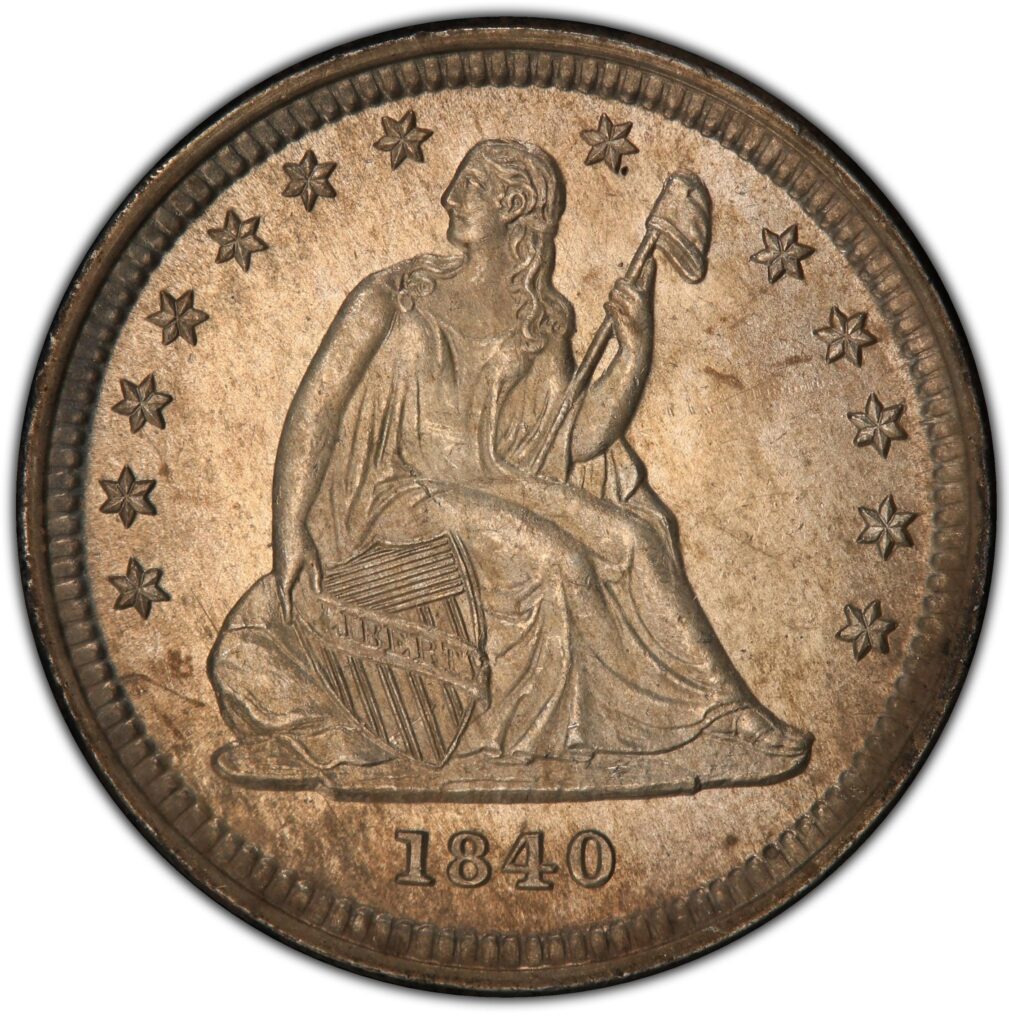
#9 – 1806 Quarter – $188,000
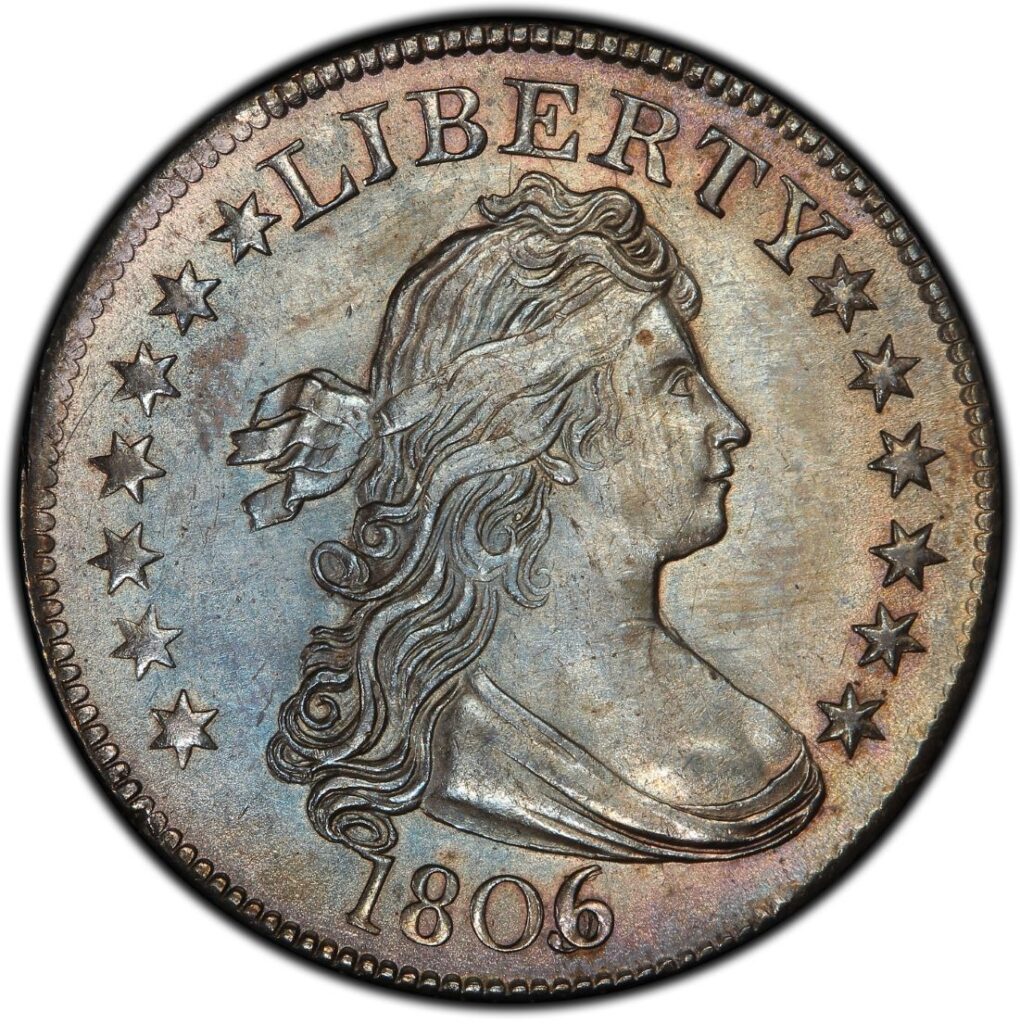
#10 – 1913-S Barber – $172,500

Categories of Valuable Rare Quarters
The United States Mint has been producing quarters since 1887. Each mintage (production run) varies in terms of length and the total volume of coins made.
As you might expect, coins produced during limited-run mintages have a higher rarity than the average quarter bearing George Washington’s image.
However, mintage length is far from the only factor influencing a coins worth and monetary value. There are many other categories of rare quarters. Some of the most notable include the following:
1. Valuable Quarters with Unique Mint Marks
Mint marks are a series of letters that identify which mint produces a coin. The U.S. Mint began requiring minters to incorporate mint marks into their production process so that the government could determine which facility struck each coin.
The US government created a commission to evaluate the quality and metal composition of coinage from various mints to ensure that the coins placed in circulation exhibited a consistent appearance.
Mint marks first hit the scene in 1838 when three new mints began producing quarters and other coins in New Orleans, Dahlonega, and Charlotte. Before 1838, the Philadelphia mint was the only place quarters were struck.
Today, four mint marks are still in use.
- D — Denver Mint
- P — Philadelphia Mint
- S — San Francisco Mint
- W — West Point Mint
Every coin produced since 1838 features a mint mark, except for coins struck between the key dates of 1965, 1966, and 1967. During these three years, mint marks were temporarily discontinued to discourage coin collecting.

Rare mint marks include Carson City, Charlotte, and New Orleans. The “CC” mint mark indicates Carson City, which was only in operation from 1870-1893.
The “C” mint mark indicates the coin minted at the Charlotte, NC mint in operation from 1838-1861.
The “O” mint mark was used at the New Orleans mint, which also operated from 1838-1861. However, the New Orleans mint reopened between 1879-1909.
2. Error Coins
Error quarters are precisely what they sound like — they were not made correctly during the minting process. Coins that fall outside the U.S. Mint’s quality tolerance thresholds are also classified as mint error coins.
Many different errors can occur in the minting process. However, all error coins are grouped into one of three categories, which include:
Planchet Errors
A planchet is a blank piece of metal that coins are minted on. To be considered a planchet, the metal must be cylindrical and have raised edges. Some examples of potential planchet errors include:
- Cracks
- Chips
- Surface imperfections
- Incorrect thickness
- Wrong material
If you have a quarter that exhibits any of the above problems, it is an error coin. Blank planchets are also considered to be quarter error coins.

Die Errors
A quarter die is an extremely hard piece of metal that mints use to create coins. Coin dies that do not adhere to the U.S. Mint’s stringent standards will produce error coins. Many valuable rare quarters include die errors, so keep a close eye out for them.
Dies out of spec can damage the planchet or incorrectly misprint the desired image onto the coin’s face or head.
Strike Errors
Strike errors occur when the coining press does not correctly strike the planchet with the die. The typical strike error classifications include:
- Multiple strike or double die
- Off-center strikes
- Rotated die strikes
- Weak strikes
- Overstrikes
Each type of strike error will yield a unique imprint on the planchet’s face. Strike errors are one of the most obvious types of minting imperfections.
3. Coins with Limited Production Obverse Images
The obverse image on a quarter is the primary design face. The secondary design face is known as the reverse image or reverse side.
The rarity of an obverse image directly impacts the coin’s value. As you might expect, an obverse image only featured on quarters for a few years will be more valuable than an obverse image minted on planchets for decades.

Uncirculated Coins Worth Money
The term “uncirculated” does not refer to a specific class of the rare quarter. Instead, it indicates that the coin is in superior condition because it never entered into circulation as part of the nation’s money supply.
An uncirculated coin that features the standard eagle and bust of George Washington might be worth a few dollars among coin collectors.
For example, the 1950 Deep Cameo Proof Washington quarter in PR65 condition sold at auction for over $3,000.
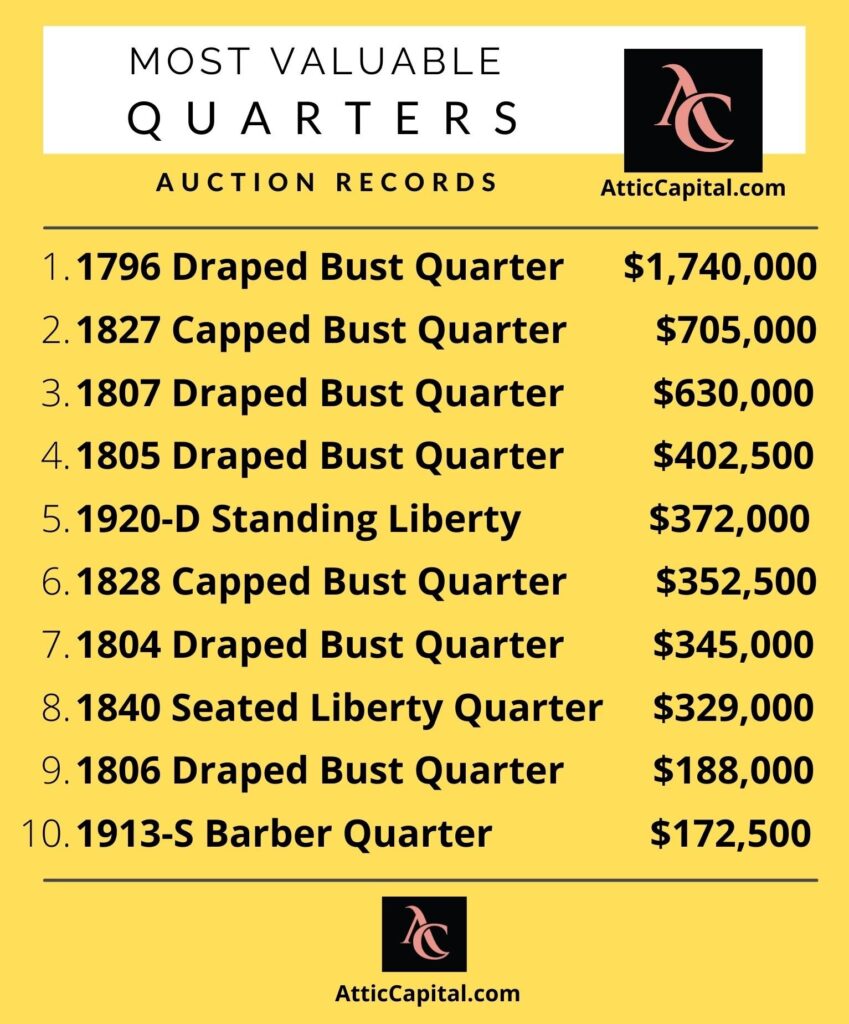
However, rare, commemorative, or limited production coins also in uncirculated condition, are worth substantially more.
You can obtain uncirculated coins in one of several ways. You can purchase them directly from your financial institution and pay the face value of the coins.
Alternatively, you can make an investment in special collector quarters by buying directly from the U.S. Mint.
1932-S Washington Quarter – $45,000

1932-D Quarter – $143,700
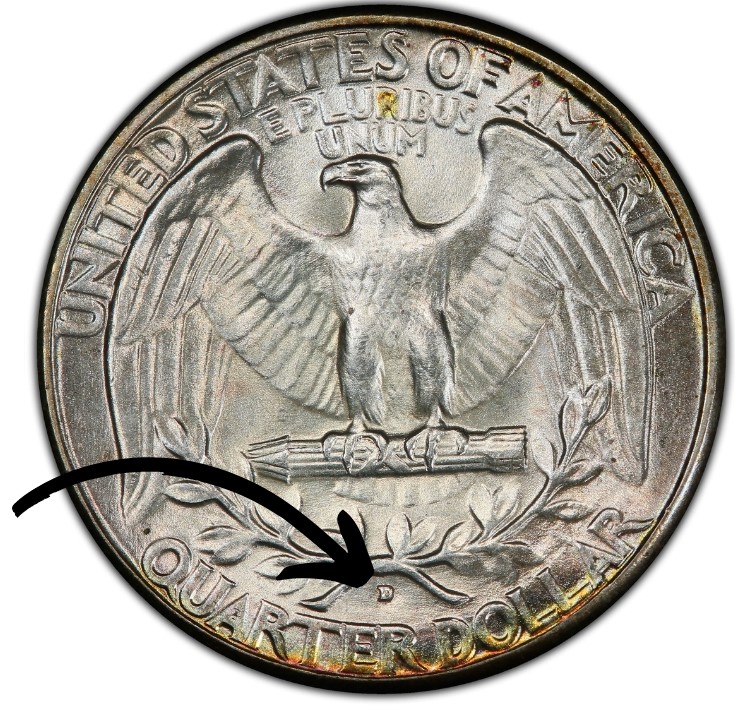
1964 Washington Quarter

1982 Quarters
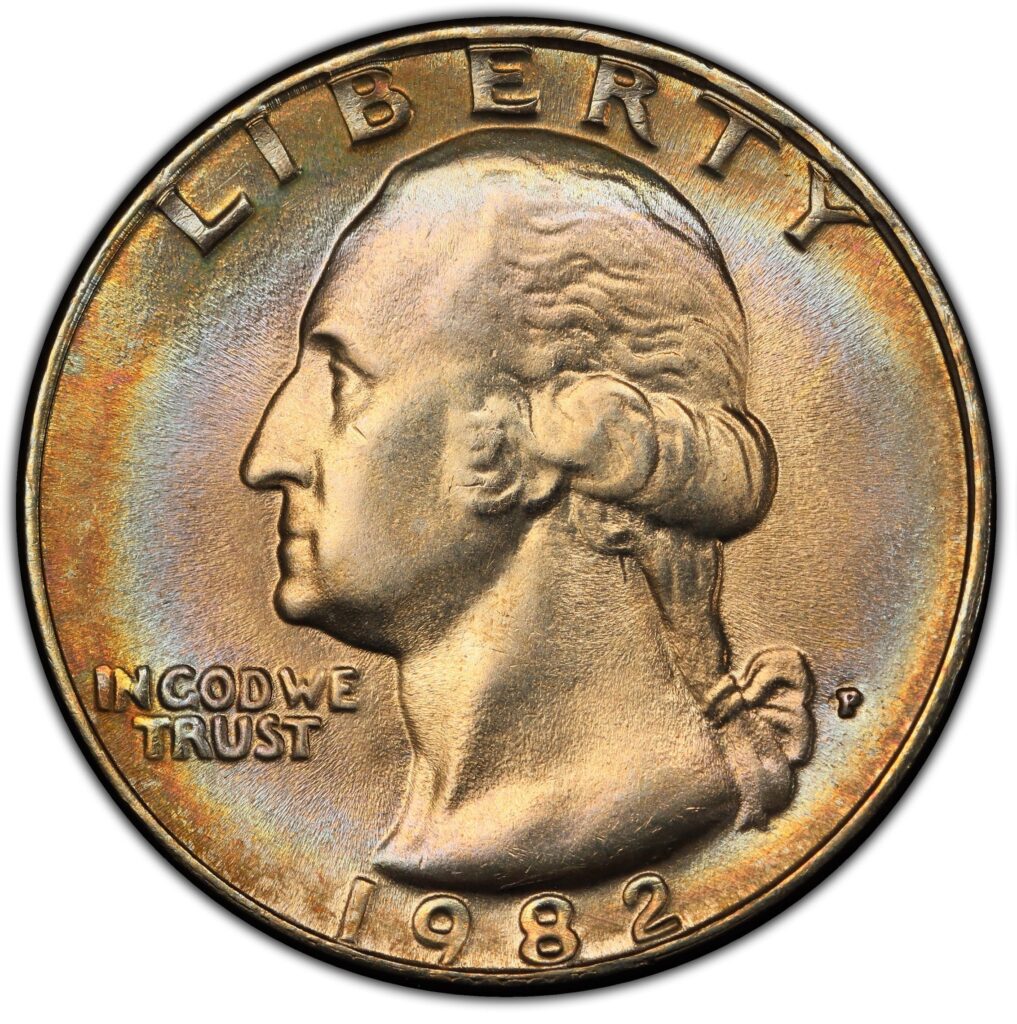
Silver Washington Quarters
From 1932 to 1964 Washington Quarters were minted with 90% silver composition.
Values of silver Washington Quarters fluctuate with the price of silver. Still, these silver coins can be quite valuable in mint state conditions.
The most valuable silver Washington quarters were struck in 1934, in uncirculated condition they are worth over $500.
State Quarters
Most state quarters are a dime a dozen, or, more accurately, about $3 a dozen, and worth not much more than their melt value.
However, a handful of state quarters are pretty rare. Four of the rarest and most valuable state quarters include the following:
1999-P Delaware Spitting Horse Quarter value – $15
2004-D Extra Leaf Wisconsin Quarter value – $85
2005-P Minnesota Doubled Die Quarter value – $200
2009-D District of Columbia Doubled Die Quarter value – $20
2000 New Hampshire Quarter value – $100
But this is a partial list. Of the 50 state quarters out there, some can fetch anywhere from a couple of bucks to a few hundred dollars each.
In addition to the state quarters, the Mint also released America the Beautiful quarter series commemorating the U.S. National Parks.
From the 2020 Bat Quarters to the Frank Church River of No Return 2019 quarters, these coins are a favorite among collectors.
1776-1976 Bicentennial Quarters
Quarters featuring the 1776-1976 stamp are called Bicentennial quarters. In celebration of the United States’ 200th birthday anniversary, the U.S. Treasury decided to mint its first commemorative coin.
The main feature on the Obverse was the date. 1776-1976 was added to signify the quarters were, in fact, commemorative coins.
The reverse featured a colonial drummer designed by Jack L. Ahr, with the words ‘Quarter Dollar’ across the bottom, and ‘United States of America’ across the top. Some suspected Ahr of copying his drummer design from a 1973 stamp design by William A. Smith.
From the time of the first mintages on July 4th, 1975, the U.S. Mint produced billions of 1776-1976 Bicentennial quarters. With the high production numbers, these coins are worth $3 to $5 bucks each in mint state condition.
How to Build Your Collection of Quarters Worth Money
The quickest way to get your hands on specific rare coins, quarters, half dollars, silver dollars, rare valuable dimes, or dollar coins is to purchase them from a collector or coin shop.
However, this is also the most expensive approach. Therefore, we suggest using several other strategies to build out your collection.
Visit eBay, local pawn shops, and consignment stores. These shops often sell coin collections or individual quarters.
If the shop owner is unfamiliar with rare and valuable coins, you can get some collectible quarters for pennies on the dollar.
Now that you know the basics of rare quarters and their history, get out there and start growing your collection.
Remember, if you ever have questions about a quarter’s value, bring it to a reputable numismatics expert, such as PCGS, to get it graded and assessed.
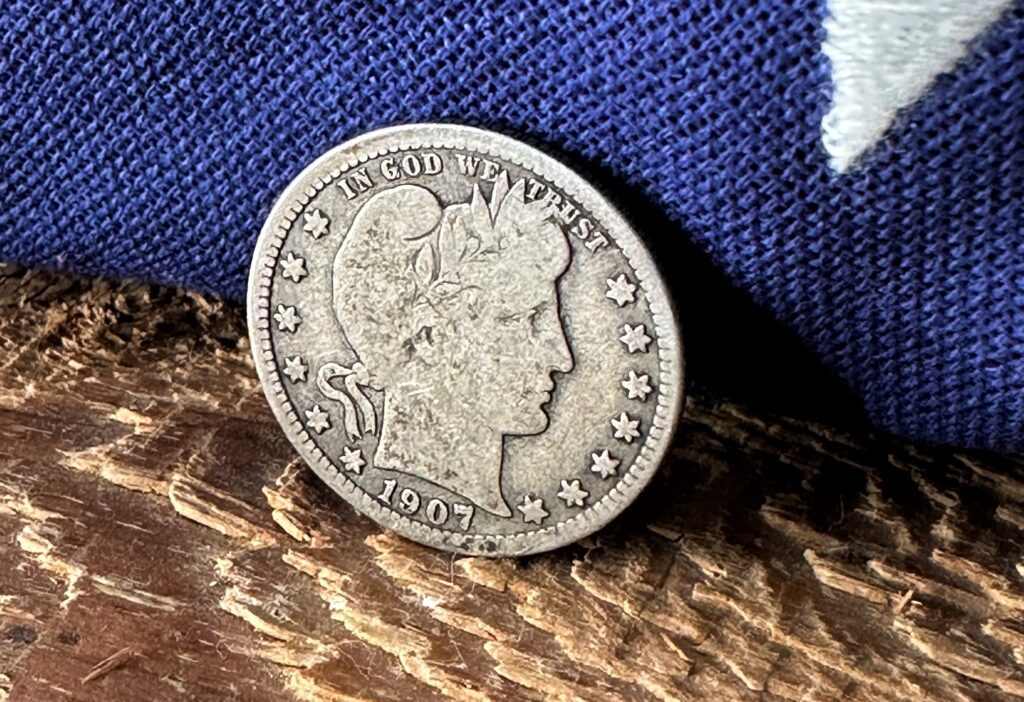
It’s Time to Deep Dive into the World of Rare Quarters –
So far we discussed –
- All the various types of U.S. quarters throughout history, and the ten most valuable to ever sell at auction.
- We talked about unique mint marks, valuable quarter error coins, and how to look out for them.
- We also looked at some of the most valuable Washington quarters, along with the Bicentennial coin, and what makes them unique.
But There’s So Much More to the Story –
- Usually, U.S. coins are named after the design on the coin, and not by the coin designer. But the Barber Quarter is just one of four coins to be named after the person who designed the coin, Charles Barber.
- The Standing Liberty Quarter has two types. Type 1 was only minted in 1916 and 1917 after some critics complained Lady Liberty had a “bare breast.” It wasn’t something people were accustomed to seeing on a coin. For the remaining thirteen years of the coin, Type 2 was minted with additional chain mail across the chest.
- There were no Washington Quarters struck in 1933. If you find one, check your eyesight, no record exists of any U.S. Mint producing a quarter in 1933. But… never say never.
- The motto “In God We Trust” appeared on the new two-cent piece for the first time in 1864. Two years later the Seated Liberty Quarter added the motto. With a positive reaction from the public, Congress ruled that all silver and gold coins include the motto of faith.
Want to Learn More About Rare Coins? I Have You Covered –
- I would like to sell my coins, but where?
- I need help valuing the coins in my collection. This guide is for you.
- What other coins make up the U.S. money system?
